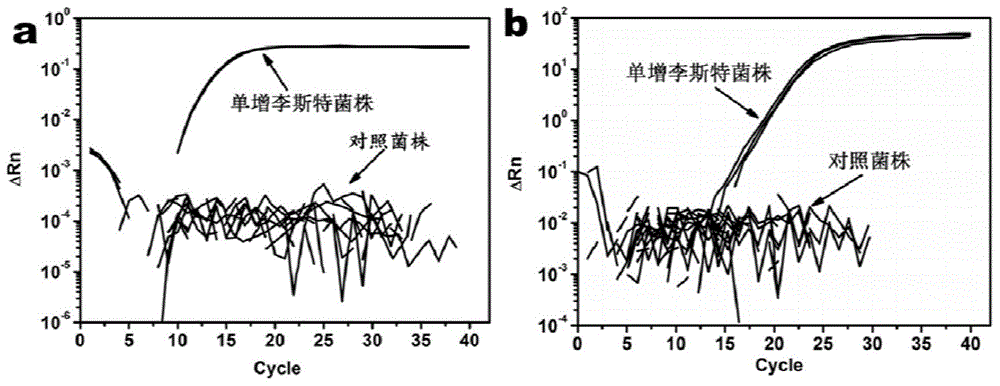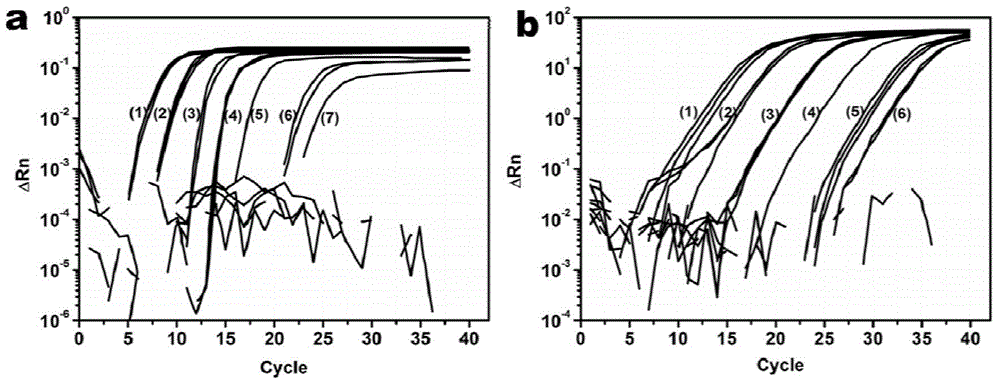Isothermal amplification method for rapid detection of listeria monocytogenes
A mononuclear cell hyperplasia and Listeria monocytogenes technology is applied in the field of food safety to achieve the effects of shortening detection time, simple reaction process and simple sample pretreatment
- Summary
- Abstract
- Description
- Claims
- Application Information
AI Technical Summary
Problems solved by technology
Method used
Image
Examples
Embodiment Construction
[0022] The present invention is further described in conjunction with embodiment:
[0023] (1) Activation and enrichment culture of Listeria monocytogenes. Prepare tryptone soybean yeast extract agar (TSA-YE) (1L) before activating Listeria monocytogenes: tryptone 17g, polyvalent peptone 3g, yeast extract powder 6g, sodium chloride 5g, dipotassium hydrogen phosphate 2.5g, 2.5g glucose, 15g agar, final pH 7.3±0.2. Autoclave at 121°C for 15 minutes, cool to about 46°C to make a plate, and set aside. Add the matching Listeria monocytogenes resuscitating solution dropwise to the freeze-dried strains in an amount of about 0.3 mL, and repeatedly blow and suck with a sterile dropper until the freeze-dried strains dissolve into a bacterial suspension; use an inoculation loop Inoculate the suspension of Listeria monocytogenes on a TSA-YE plate, place the plate in a 37°C constant temperature incubator and incubate it upside down for 12 hours; prepare brain-heart infusion broth (BHI) me...
PUM
 Login to View More
Login to View More Abstract
Description
Claims
Application Information
 Login to View More
Login to View More - R&D
- Intellectual Property
- Life Sciences
- Materials
- Tech Scout
- Unparalleled Data Quality
- Higher Quality Content
- 60% Fewer Hallucinations
Browse by: Latest US Patents, China's latest patents, Technical Efficacy Thesaurus, Application Domain, Technology Topic, Popular Technical Reports.
© 2025 PatSnap. All rights reserved.Legal|Privacy policy|Modern Slavery Act Transparency Statement|Sitemap|About US| Contact US: help@patsnap.com



